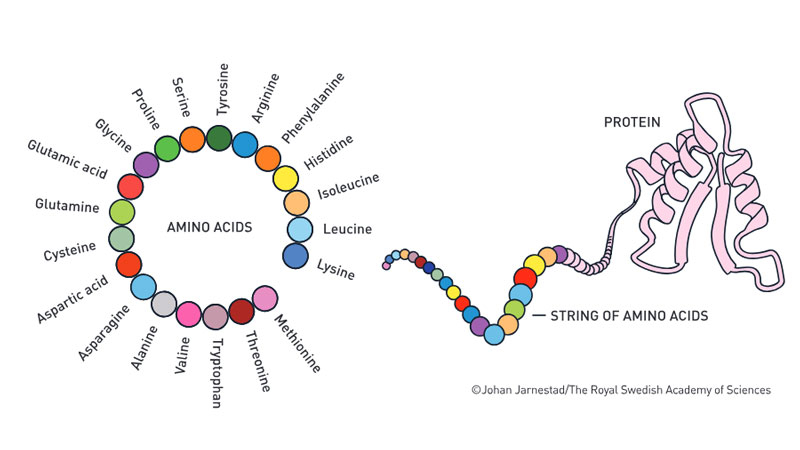The Royal Swedish Academy of Sciences shared the 2024 Nobel Prize in Chemistry between David Baker of the University of Washington and Demis Hassabis and John Jumper of Google Deep Mind for creating machine algorithms for predicting the structure of proteins. Since both achievements are aimed at studying proteins – the building blocks of biological life on Earth – this work of scientists is invaluable.

Image source: nobelprize.org
Machine learning and artificial intelligence again received a prestigious award. Yesterday it became known about the Nobel laureates in physics for 2024, who were the creators of neural networks and algorithms. This did not happen suddenly. Mass awareness of the promise of machine learning was stirred up just over a year ago by multiple examples of “neuroart.” And now many have realized how exciting and useful it can be.
Demis Hassabis and John Jumper and colleagues from Deep Mind introduced the AlphaFold platform to the general public in 2018. Since then, several versions of the program have been released, up to the third in May of this year. Before AlphaFold, biologists and chemists were essentially manually predicting the bulk structures of proteins. All of them consist of about two dozen amino acids. Depending on the sequences of compounds, the final protein will take one or another unique configuration in space.
A protein will be useful if its shape fits like a key to a lock for a particular compound, a living cell or its element. Then he can join in and react. This allows the discovery of new drugs, enzymes and much more in biology and chemistry. But predicting the 3D shape of new proteins among hundreds of millions of variants is a daunting task for the human mind. The AlphaFold program easily predicted the spatial shape of all 200 million proteins already known to science and is ready to predict the shape of amino acid compounds that do not exist in nature.
David Baker was doing this work many years before AlphaFold came along. He created a completely new and unlike anything else protein back in 2003, which also earned him recognition from the Nobel Prize Committee. This year the award found heroes. Unusual, useful and vital proteins – to be.